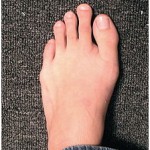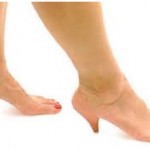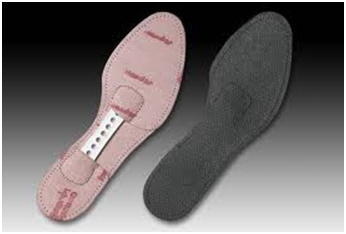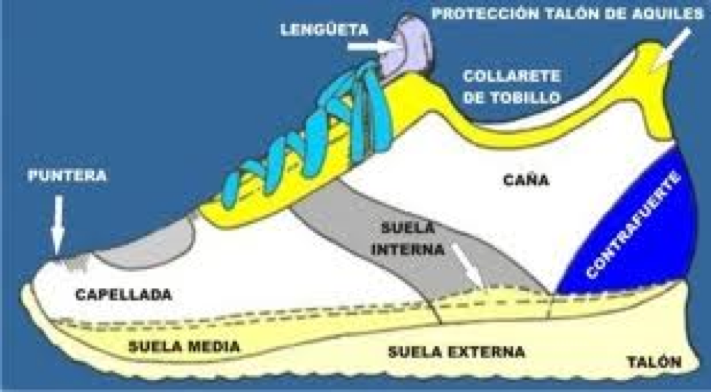The feet are a vital part of our body. If your foot is poorly aligned, the whole structure of the body can be affected and in fact, many back, hip or knee problems have their origin in the feet.
Likewise, the feet are the only part of the body that is in permanent contact with the world around us, which is why since the beginning of time, humans have come up with different ways of protecting them. We know that the cavemen covered their feet with animal skins to be able to cope with the harsh Ice Age. With the arrival of agriculture and a more sedentary lifestyle, the first civilisations developed different types of footwear. Shoes have always had different purposes, ranging from protecting feet from the weather to showing off one’s social class.
Without a doubt, shoes have helped us to look after our feet for longer, protecting them from wounds, bites or stings. However, the sheer number and confusing array of different models and shapes which fashion has brought about may have led to the consumer often not being able to see the wood for the trees. We would like to provide a few guidelines on what characteristics footwear should have so that we can look after our feet correctly, although this is by no means an exhaustive study.
The characteristics good shoes should possess:
- The shoe should be big enough to hold the foot. If it is too tight it may rub and cause callouses, but if the shoe is too big, it won’t hold the foot properly which can result in discomfort and problems with balance. Shoes that do not hold the feet correctly can lead to a higher risk of injuries such as sprains. The feet also undergo a natural deterioration as they age (sunken metatarsals, joint misalignment, etc.) which is speeded up if they are not well supported by the correct footwear.
- It is essential that each person finds the shoe shape that suits them best; you should
 select the type of shoe that feels good from the point of view of keeping your feet healthy. When buying new shoes you should check that your big toe does not touch the end of the shoe; this is what should occur for most people. However, those whose big toe is shorter than the second toe (called “Greek foot” which you may have seen in Michelangelo’s sculptures) should ensure that it is the second toe that does not touch the point of the shoe. Unfortunately, many people with Greek foot don’t take this into consideration and we often come across cases of patients whose second toe has become a claw toe due to pressure against the point of the shoe. Likewise, if you have very wide feet, your shoes should match this width. We sometimes choose shoes with sides that are too flexible which means the toes splay out on either side, which can cause rubbing and instability.
select the type of shoe that feels good from the point of view of keeping your feet healthy. When buying new shoes you should check that your big toe does not touch the end of the shoe; this is what should occur for most people. However, those whose big toe is shorter than the second toe (called “Greek foot” which you may have seen in Michelangelo’s sculptures) should ensure that it is the second toe that does not touch the point of the shoe. Unfortunately, many people with Greek foot don’t take this into consideration and we often come across cases of patients whose second toe has become a claw toe due to pressure against the point of the shoe. Likewise, if you have very wide feet, your shoes should match this width. We sometimes choose shoes with sides that are too flexible which means the toes splay out on either side, which can cause rubbing and instability.
If you have Greek foot, the point of the shoe should adjust to the second toe, not to the big toe.
- As far as the heel is concerned, a moderately high heel (up to 4 cm) not only is not bad,
 but it also helps to relieve the calcaneus (the heel bone), thus avoiding fatigue in this area.
but it also helps to relieve the calcaneus (the heel bone), thus avoiding fatigue in this area.
A small heel is recommendable.
- All men’s and women’s shoes with a heel should have a steel shoe shank: a metal strip that
 along the top part of the heel to the beginning of the sole. This strip makes the shoe’s arch support totally rigid meaning that you are walking on a firm base. Many non-European manufacturers use shoe shanks made of cardboard rather than steel and the consequence of this is that the shoe’s arch support becomes deformed from the weight of the wearer, stretching the foot arch which can lead to problems such as plantar fasciitis. In short, some manufacturers offer very good prices by offering dangerously lower quality.
along the top part of the heel to the beginning of the sole. This strip makes the shoe’s arch support totally rigid meaning that you are walking on a firm base. Many non-European manufacturers use shoe shanks made of cardboard rather than steel and the consequence of this is that the shoe’s arch support becomes deformed from the weight of the wearer, stretching the foot arch which can lead to problems such as plantar fasciitis. In short, some manufacturers offer very good prices by offering dangerously lower quality.
It is essential that there is a steel shank along the base of the shoe so that the foot doesn’t sink.
- It is a good idea that the shoe has a good heel counter, so that the back part of the foot is well supported and protected by a high and solid “wall”. This heel counter ensures the foot is correctly aligned and provides stability when walking. This is an aspect that is taken very seriously when it comes to sports shoes.
- The shoe should be highly flexible cross-wise, that is to say, it allows the foot to bend
 easily when walking, but should be inflexible length-wise, as if it isn’t, it can twist sideways, destabilizing the foot. There is a famous brand of shoes that sells “comfort” as it is flexible in all four directions. A shoe like this is comfortable when you first put it on and could even be perfectly adequate for using as house slippers. However, this type of shoe in the end is not advisable for everyday wear and can create a lot of problems.
easily when walking, but should be inflexible length-wise, as if it isn’t, it can twist sideways, destabilizing the foot. There is a famous brand of shoes that sells “comfort” as it is flexible in all four directions. A shoe like this is comfortable when you first put it on and could even be perfectly adequate for using as house slippers. However, this type of shoe in the end is not advisable for everyday wear and can create a lot of problems.
If you have wide feet and you choose a narrow fitting shoe, you may end up with deformities in your toes, such as bunions or claw toes.
- Finally, if you are going to get insoles, try to make sure that they will fit in the area of the
 instep. This means that the insole fits the shoe well without squeezing the toes. Buying shoes that are one size too big is not recommendable as the foot could slide forwards; thus the parts that support the sole (the foot arch, etc.) fall where they shouldn’t, causing discomfort.
instep. This means that the insole fits the shoe well without squeezing the toes. Buying shoes that are one size too big is not recommendable as the foot could slide forwards; thus the parts that support the sole (the foot arch, etc.) fall where they shouldn’t, causing discomfort.
A counter that is solid and wraps around the heel provides the foot with more stability.
So, talk to your specialist and buy the right shoes for your feet. You will end up with better health, a higher quality of life, and at the end of the day, save money.
For further information please contact us by e-mail or phone, or take a look at our website.
Ignacio Nájera García-Segovia
Manager in ortopedia ORTO-CENTER, SL


